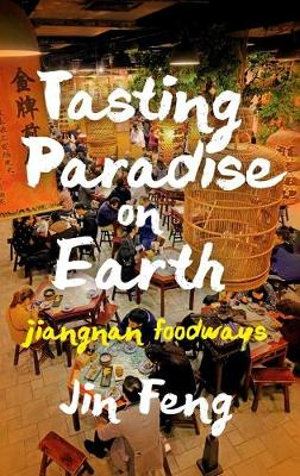Blog

- Podcast
Chinese Foodways: Interview with Jin Feng
Even though everyone eats, people have different ideas and beliefs about food. And food is a very good window on culture.
Jin Feng
In the podcast Jin Feng, Professor of literature at Grinnell College, Iowa, and author of a new book on Chinese foodways Tasting Paradise on Earth: Jiangnan Foodways (University of Washington Press, 2019) was interviewed by David DuBois (Beijing Normal University).
To listen to the podcast: https://asianethnology.org/page/podcastfeng

In the podcast Feng shares how the students were taken to China and Russia for experientially exploring foodways. For many of the first-time international travellers, the experience of food in China was eye-opening. They better understood the importance of food beyond its nutritional value. They felt and experienced the importance of food in Chinese life - its cultural, social and aesthetical aspects.
Foodways are windows to revealing intersections of food in culture, tradition, history and changes. The experience of food appeals to all our senses and more. Foodways takes us on a journey of socialisation, memories, migration, adaption and more. One is reminded of the experiences of the volunteers of Atelier Populaire: Building New Knowledge and Practices on Street Food in Saint-Louis, Senegal, when they set out for surveying street food in Dakar.
Bruno's conversation with the Pulaar forox-caaya seller, which can be read on the link below, is a reflection of how food is beyond something to be consumed. Some of their observations were,
All of us noted the fluidity of the food, vendors, origin, customers, structures, spaces and tastes. All familiar, and taken for-granted, sights for the people who live here, yet when they were asked to consider them in the context of the survey, the layers and stories of the food and people helped them place street food in broader perspectives.
The food served at these canteens and other spaces is of single-origin or taste, yet not quite. The fataya sandwich is of Lebanese origin. It is a much-loved choice. The sandwich is a delicious little stuffed meat slipper (beef, chicken, fish, seafood) found on West African markets. When eaten on the go, it is quickly wrapped in paper and bagged. Accra niébé, so-called in Senegal, Ghana and Nigeria, are doughnuts of haricot found throughout Africa.[1]”
The podcast apart from the foodways talks about in-situ experiential methodology, pedagogy and learning processes. Over the years, we at HaB have collectively undertaken, in Asia, Africa as well as in Illinois, through our students and projects, this in-situ learning across our four sites of knowledge and meaning – food, place, practice and word.
I am truly happy to join this class. To be honest, it is quite different from what I had imagined. I had thought that it was about enhancing painting skills. However, to know more about crafts and industries, and to touch upon what impacts or changes an art university student could bring to the society, maybe are more important.[2] -- Lee, Hsin-yun, Senior, Theatre major, TNUA
The above reflection is by a student who took the course, Blue across Borders, at Taipei National University of the Arts. The course is targeted as the liberal education for art students, and uses indigo to generate among students (a) an interest and appreciation of crafts, (2) overcome the hierarchy of conceptual arts in the higher education of the arts; and (3) to connect the students with humanistic issues of the wider society beyond the university walls. By experiencing the whole process of indigo harvesting, dye extraction, and dyeing, the student's understanding of the world around is visible in the reflection.
In another parallel, Tharaphi Than took her anthropology students of the course Peoples and Cultures of Southeast Asia at Northern Illinois University (NIU) to explore the southeast asianess by writing a digital story using everyday items or foods commonly found in Southeast Asia. The students undertook this exploration by first visiting the Pick Museum at NIU where they got a chance to see, touch, smell and experience different everyday items of Southeast Asian households. Gradually the students humanised their inquiries and understanding of other culture. The food, curry paste, ingredients, spices, some familiar and some not, and material objects became means of reading a culture not familiar[3]. For more, visit:.
The methodologies and pedagogies encouraged by HaB and co-developed along with its partners are similarly aimed at humanising education and knowledge by bringing them out of the confines of meta-concepts, walls of the classrooms and formal texts. These are undertaken by connecting with the with farmers, artisans, craft-practitioner, old time residents, or migrants and using their memories, experiences, and knowledge to understand the world in a humanistic way.
I invite the readers to share their experiences of foodways and in-situ learning.
[2] Shared by Min Chin Chiang at roundtable: Place, Practice and Nature in Experiential Perspective 1: Indigo at ICAS 11, 17 July 2019, Leiden, Nl.
Read more
- Log in to post comments


